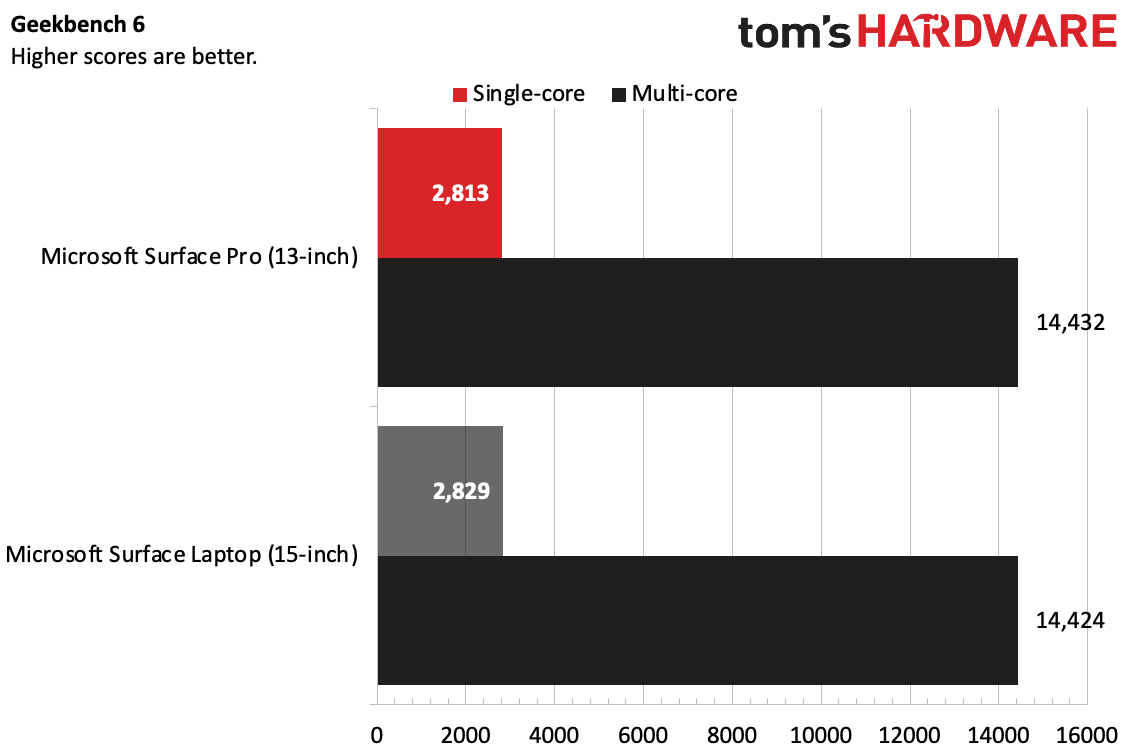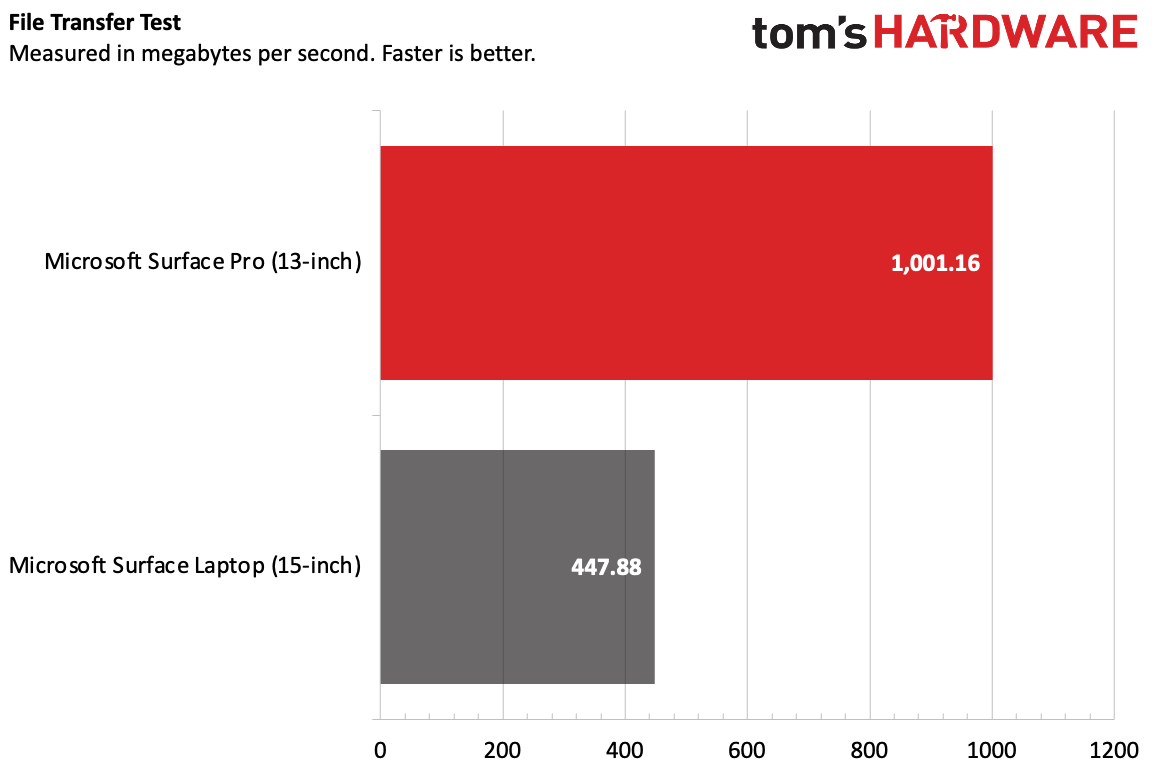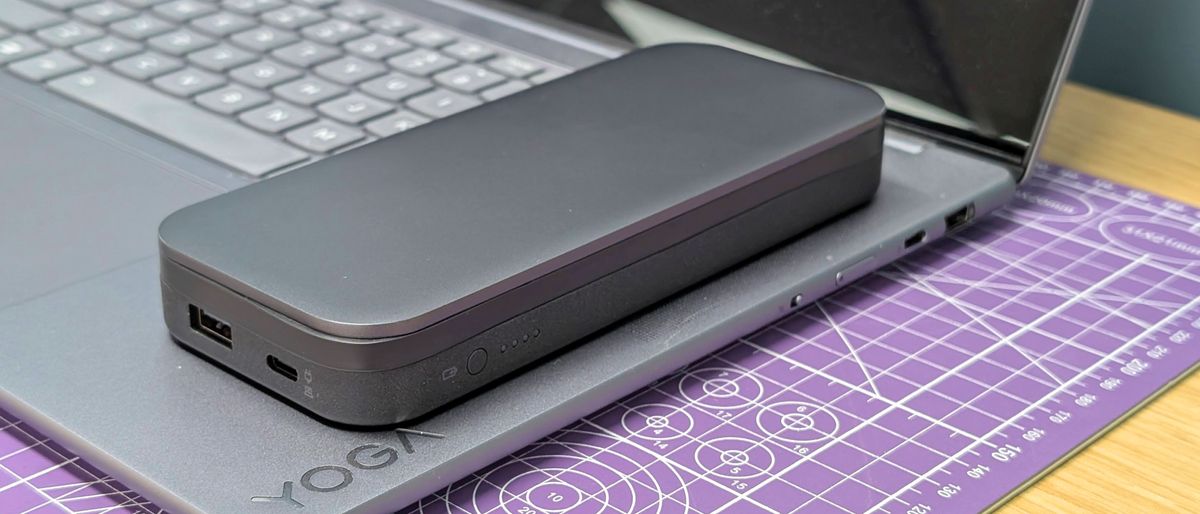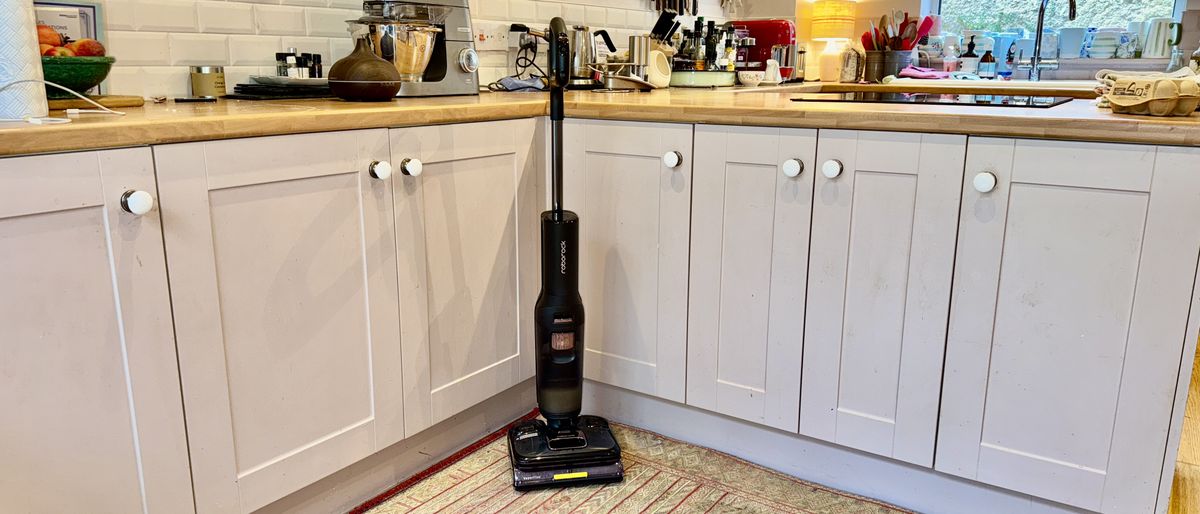Windows 11 is available on all kinds of hardware, but Microsoft makes its own to showcase the popular operating system on its own premium machines.
The company's Surface Pro has become something of an icon, seen on the sidelines of the NFL and on news anchor desks. Its design, a tablet with a kickstand and a detachable keyboard, has been widely duplicated and is extremely portable.
But it's the Surface Laptop that Microsoft has touted as its most popular option, with a familiar clamshell design that is familiar and simple.
In its flagship configurations, Microsoft uses the Qualcomm Snapdragon X Elite to power both machines, and you can configure them similarly. So much of which system is better for you comes down purely to the design you like better, how much you use your device on your lap, and especially how much you're willing to spend on accessories.
For most, the Surface Laptop is the option that will be more familiar. But for those who love to write, draw, or reduce weight, the Surface Pro may be enticing.
Note that this guide is mostly covering the premium versions of these devices - the 13-inch Surface Pro and the 13.8 and 15-inch Surface Laptops, which use the Qualcomm Snapdragon X Elite processors. Microsoft has recently released new entry-level models using Snapdragon X Plus (8 core) chips with smaller displays and lighter builds, but we haven't gotten our hands on those yet.
Design
Laptop or tablet? It's almost that simple. Almost.The Surface Laptop is just that — a notebook PC. It's slim and sleek, sure, but it's a laptop. The Surface Pro, however, is a hybrid device. At the Pro's most basic, it's a Windows 11 tablet with a kickstand. Add a keyboard (that comes separate and costs extra), and now you have a full on PC.
The Surface Pro is the lighter device, at 1.97 pounds (before you add the keyboard) and 0.37 inches thick. The 13.8-inch Surface Laptop is 2.96 pounds, while the 15-inch Laptop is 3.67 pounds. It may not seem like a lot, but when you're jamming it in a backpack, the Surface Pro will be easier to fit.
Swipe to scroll horizontally
Thickness | 0.37 inches (9.3 mm) | 0.69 inch (17.5 mm) | 0.72 inch (18.29 mm) |
Weight | 1.97 pounds (without keyboard) | 2.96 pounds | 3.67 pounds |
You also get more ports on the laptops. While all of the devices feature two USB 4 Type-C ports and Surface Connect, only the Laptops feature a headphone jack and USB 3.2 Type-A port. The 15-inch Laptop also adds an SD card slot.
The newer, 13-inch Laptop and 12-inch Pro both ditch the Surface Connect port and rely on USB 3.2 Type-C ports for charging. The 13-inch Laptop also gets a headphone jack and USB 3.1 Type-A.
The Surface Pro 13 and Surface Laptop 13.8 each come in sapphire, dune, black, and platinum. The 15-inch Surface Laptop is limited to black and platinum.
Peripherals
The downside to the Surface Pro is that the keyboard doesn't come in the box. And while you might want to use it as a tablet some of the time, let's not pretend Windows 11 is the world's most touch-friendly OS.
How much you spend on that keyboard depends on its features. The most basic keyboard is $169.99, while a keyboard with Surface Slim pen storage is $179.99. A bundle with the Slim Pen bumps the price up to $279.99, while the Flex Keyboard, which works either attached to the Pro or over Bluetooth, is $399.99. (With a Slim Pen, the keyboard jumps to $499.99).
If you just want to buy a stylus on its own, the Surface Slim Pen is $129.99.
You can, at times, find deals on these accessories, especially from sellers like Amazon or Costco, which sometimes put bundles together. But either way, if you want a full Surface Pro setup, you may have to pay several hundred dollars more than the base price.
In some regions, the Surface Pro may not come with the charger. In the US, the 13-inch version comes with a 39 W power supply, though the 12-inch option doesn't, so you'll need to bring your own 27W or higher USB-C power adapter.
Performance
Across the Surface Pro, Surface Laptop 13.8, and Surface Laptop 15, Microsoft is using the same variant of the Snapdragon X Elite - the X1E-80-100. These 12-core processors have integrated Adreno GPUs, a 4.0 GHz boost frequency on two cores, and 3.4 GHz max frequency across the 12 cores.
Swipe to scroll horizontally
CPU | Snapdragon X Elite X1E-80-100 |
Graphics | Qualcomm Adreno GPU, integrated, 3.8 TFLOPS |
NPU | Qualcomm Hexagon (45 TOPS) |
Cores | 12 |
Cache | 42MB |
Boost Frequency | 4.0 GHz (dual-core) |
Max multi-core frequency | 3.4 GHz |
Both the Surface Pro and the 15-inch Surface Laptop have come through our labs, so we can put them against each other. Both were using 16GB of RAM, though the Surface Pro had 512GB of storage and the Surface Laptop 15 had a 256GB SSD.

In Geekbench 6, the Pro and Laptop came pretty close to each other in both single-core and multi-core scores, so you can expect similar performance from the two of them in basic tasks.
On our file transfer test, the Surface Pro was way faster than the Surface Laptop at copying 25GB of files. Note that they had different size drives — they may also be using different brands or tiers of drive, too.
On Handbrake, the Surface Laptop won. Despite the same chips, it's likely the 15-inch Surface Laptop has superior cooling that helped with graphics performance.
Display
The 13-inch Surface Pro is the only Surface device right now with an OLED display (it's optional, and only on models with a Snapdragon X Elite). That screen gives you improvements in color reproduction and brightness. If OLED matters to you, it's the only way to go.

You still get a high-resolution, 3:2 touchscreen on each model. The Surface Pro has a 2880 x 1920 screen on either the 13-inch OLED or LCD models, offering 267 pixels per inch. The 13.8-inch Surface Laptop has a 2304 x 1536 screen, while the 15-inch Laptop has a 2496 x 1664 — both 201 PPI. All of the screens support dynamic refresh rates up to 120 Hz.
Battery Life
In our battery test, which sets display brightness to 150 nits, browses the web, runs OpenGL tests, and streams videos. The 13-inch Surface Pro ran for 12 hours and 17 minutes, while the Surface Laptop hit 14:47.

There are lots of possible contributing factors. For starters, the Surface Pro has an OLED display. Additionally, the Surface Pro has a 53 WHr battery (48 WHr on LCD models), while the 15-inch Surface Laptop has a larger 66 WHr battery. The Surface Laptop with a 13.8-inch screen has a 54 WHr battery.
Wireless
If you want to work on the go without tethering to your phone, you should opt for the Surface Pro. Certain high-end configurations come with support for both Wi-Fi 7 and 5G networking. As of this writing, the only one on Microsoft's website that works with 5G and is available is a Surface Pro with a Snapdragon X Elite, 16GB of RAM, and 512GB of storage, which will run you a pricey $1,799.99.
The Surface Laptops don't support 5G, and can only connect to Wi-Fi.
Pricing
As of this writing, when it comes to the high-end models, the 13-inch Surface Pro starts at $929.99, the 13.8-inch Surface Laptop starts at $1,031.22, and the 15-inch Surface Laptop starts at $1,299.99.
The new cheaper models, the Surface Laptop 13 and Surface Pro 12, start at $899.99 and $799.99, respectively. The existing models
had lower-end configurations cutto make room for them.
That $929.99 Surface Pro has a Snapdragon X Plus (10 Core) processor, not the Elite, along with an LCD screen rather than the OLED we tested. To get that price, you have to pick the "dune" color from Microsoft's site, otherwise you're looking at $999.99. The configuration with Snapdragon X Elite and OLED starts at $1,199.99.
The Surface Laptop 13.8's $1,031.22 price point is also seemingly due to sales trying to get rid of the dune colorway. In fact, it makes the Snapdragon X Elite cost less than the X Plus. Otherwise, most colors are going for $1,199.99 with Elite and $1,099.99 with Plus.
The 15-inch Laptop only comes with X Elite, starting at $1,299.99.
The Pro might seem like a deal, until you remember that even if you pick the sale up, you'll still have to buy extras, like the keyboard (see "peripherals," above). The Laptop is cheaper if you don't care about having a tablet but do care about having a keyboard and more ports. But if you need the tablet form factor, you don't really have a choice.
With some sales going on, you can get upgrades in storage for relatively cheap for the laptops (for instance, moving from 256GB to 1TB is currently $100 on the 15-inch Laptop).
Verdict
With performance being roughly similar, whether or not you should opt for a Surface Pro or a Surface Laptop comes down to the design and the display.
Most people are best served by a traditional laptop for work or school. If you really prefer taking notes by hand and want to use your PC for drawing, the Surface Pro makes a lot more sense. There's a reason it's popular for field work. Otherwise, it's also great because of how portable it is.
At the moment, the Surface Pro also has the distinction of being the only Surface device available right now with an OLED display option. While it's a strange choice to tie it to a chip, getting the Snapdragon X Elite with the OLED panel makes for a great performance and viewing experience. The Pro is also lighter and thinner than laptops.
But the Surface Pro is effectively incomplete out of the box, requiring a significant outlay for the keyboard cover, and even more if you also want a pen and, in some countries, a charger. The Surface Laptop has everything you need in the box.
I would love to see a Surface Laptop with an OLED display option. Outside of that, the Surface Laptop just makes more sense for more people. The Surface Pro is more portable, but the Laptop is, for most needs, more practical.

 5 months ago
15
5 months ago
15












 English (US) ·
English (US) ·